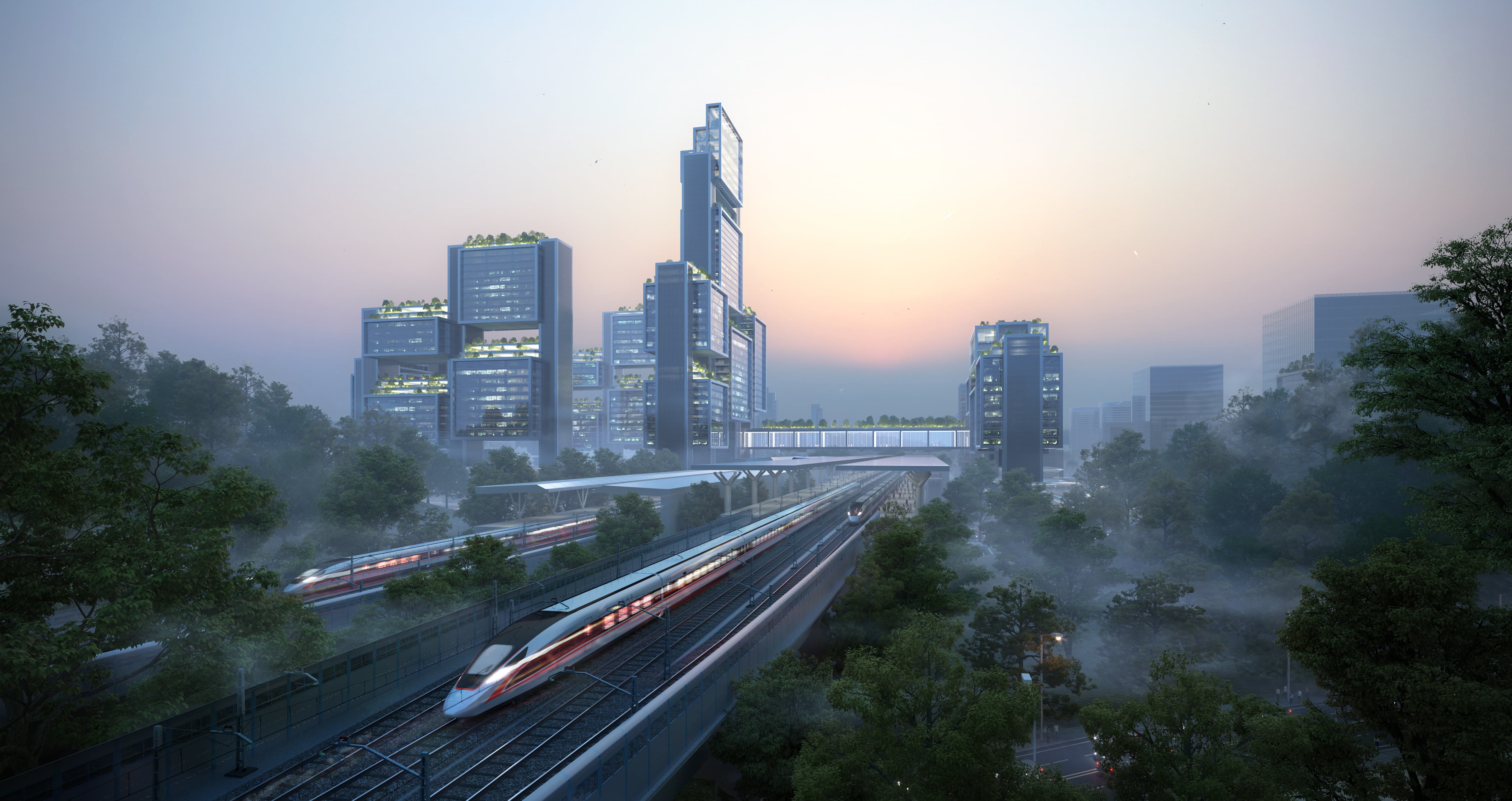
This smart city will help connect Hong Kong, Shenzhen and Guangzhou
FOSTER + PARTNERS has unveiled its winning design for the Guangming Hub masterplan - a smart city built around a major new transportation hub that will connect Hong Kong, Shenzhen and Guangzhou.
The new development will aim to regenerate the region while creating an urban destination along the high-speed rail link that connects the three cities.
To develop the scheme, the team at Foster + Partners used specially designed computer software to discover the ideal urban massing for the site.
The result is a generously landscaped, walkable development that takes advantage of the site’s unique topography through a series of sky bridges with space for cyclists, pedestrians, and slow-moving autonomous vehicles.

Above and Below: The design team have prioritised walkability and green spaces ( images courtesy of Foster + Partners).

“The central idea is to capitalise on the natural beauty of the site, utilising the lush landscape to create a lively experience for visitors and locals,” explained Young Wei-Yang Chiu, a partner at the studio, in a press release.
“It will be a forest gateway into Shenzhen.”
This idea of “gateways” has been carried throughout the project with the design of several office towers located at cardinal points across the site.
Aesthetically inspired by the traditional Chinese gateway that marks important entryways, these towers are also the central access point to high-speed railway station.
The development will also include a transport museum built on a bridge over the station that will connect the eastern and western halves of the site.

Above and Below: The site will form an important transportation hub along the high-speed rail line that connects Hong Kong, Shenzhen and Guangzhou (images courtesy of Foster + Partners ).

Despite the ongoing pandemic, China is in the middle of a massive construction boom.
The country now consumes roughly half of all the world’s industrial metals, and as a result of the boom has driven up the price of iron ore - which is needed to make steel - by 40 percent.
As part of a stimulus plan to fight the economic impact of COVID-19, China has invested in several large infrastructure projects, including doubling the size of their high-speed rail network within the next 15 years.








